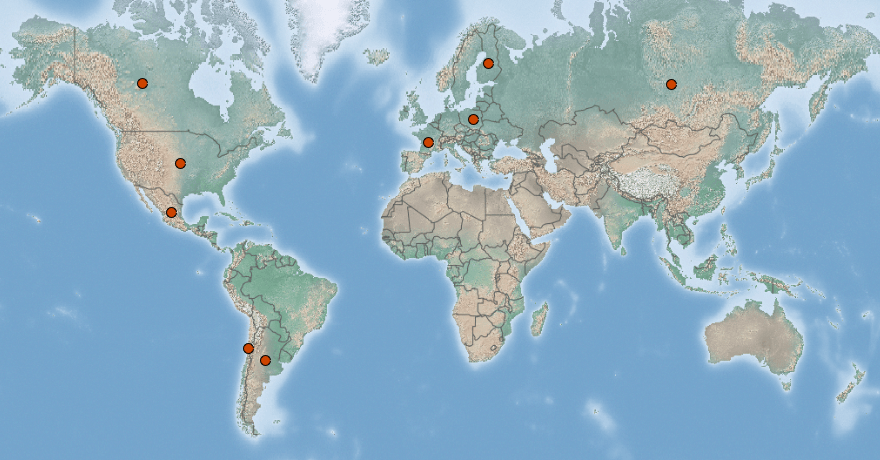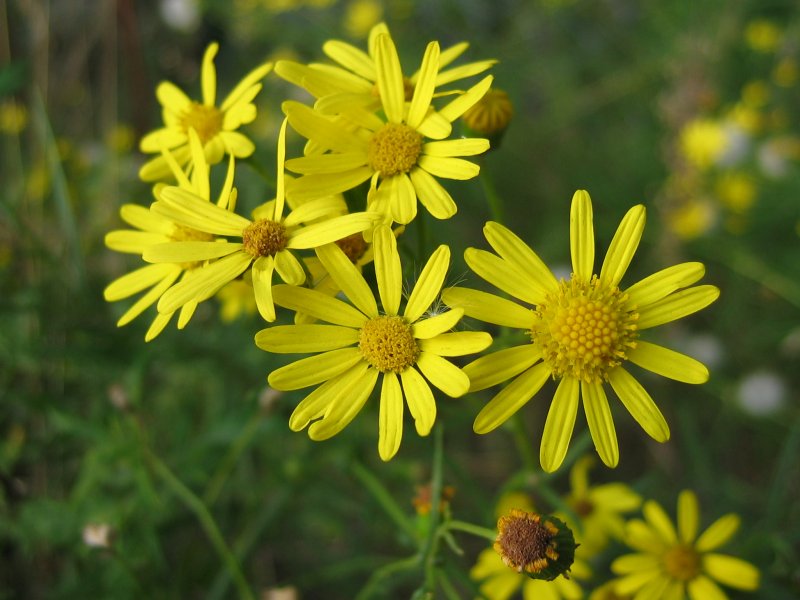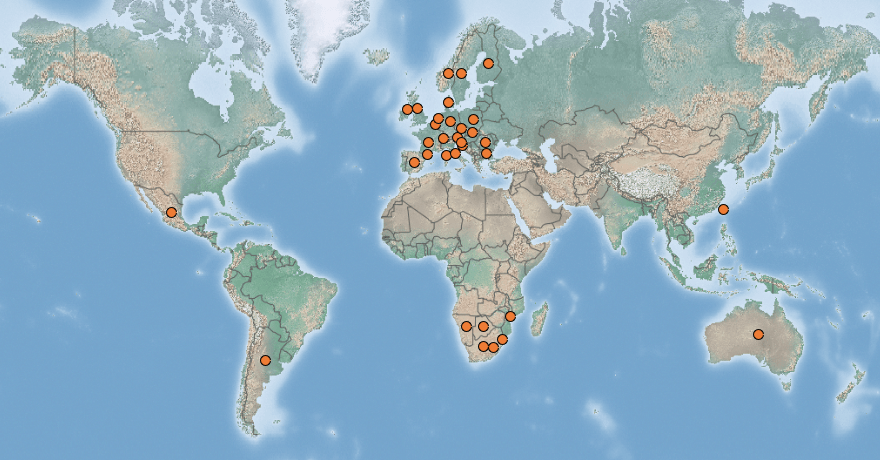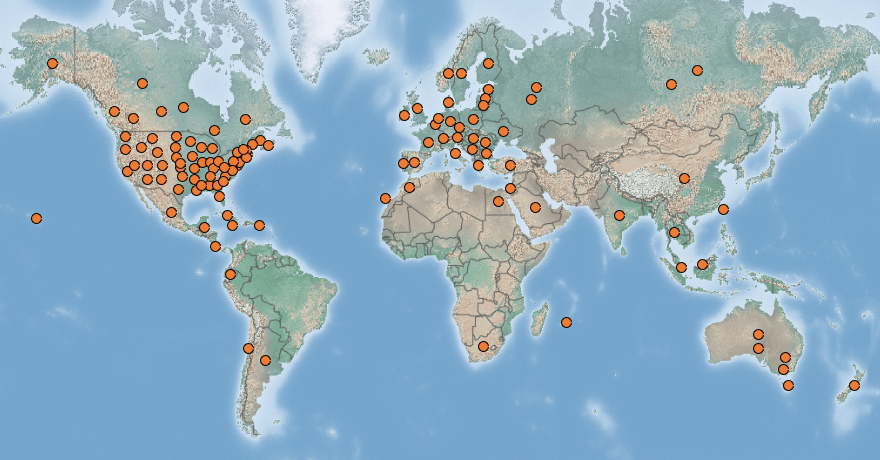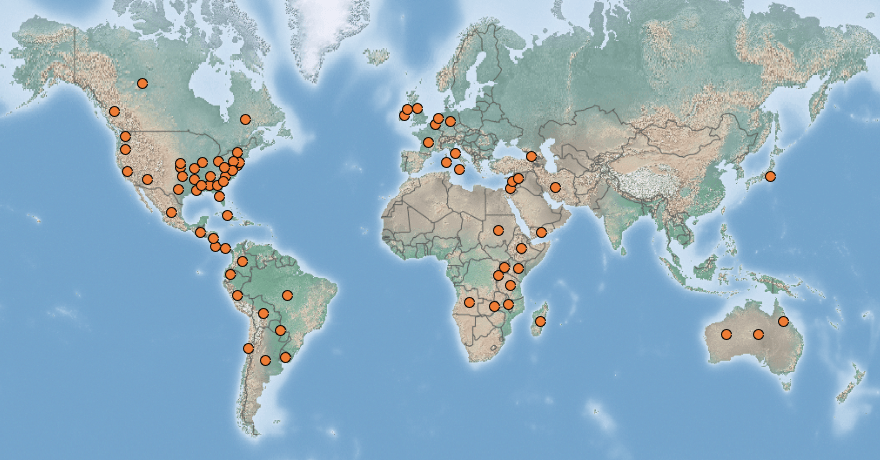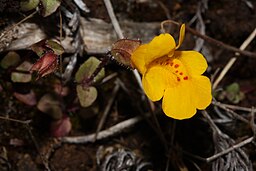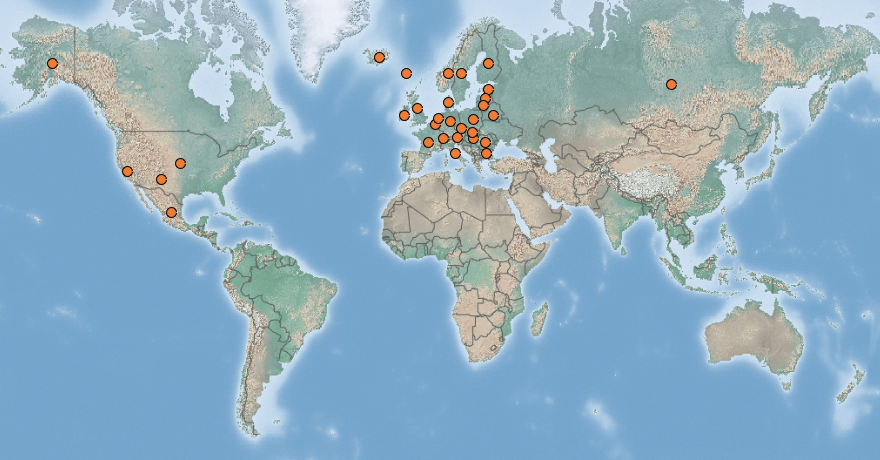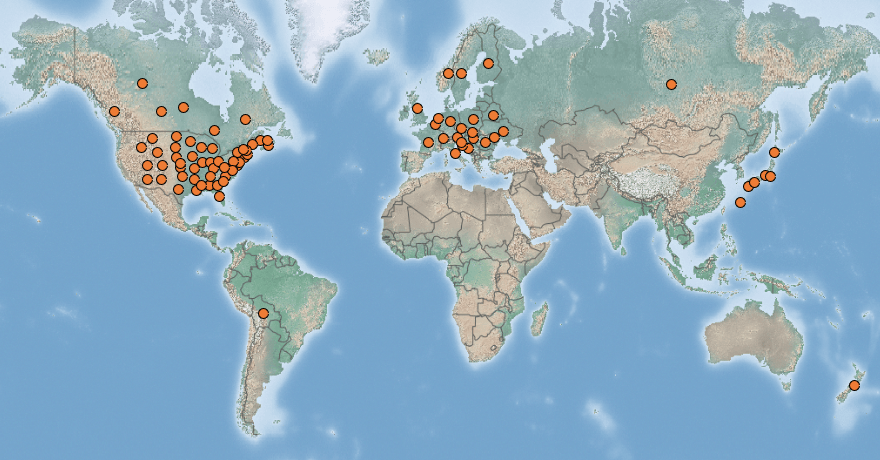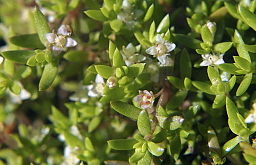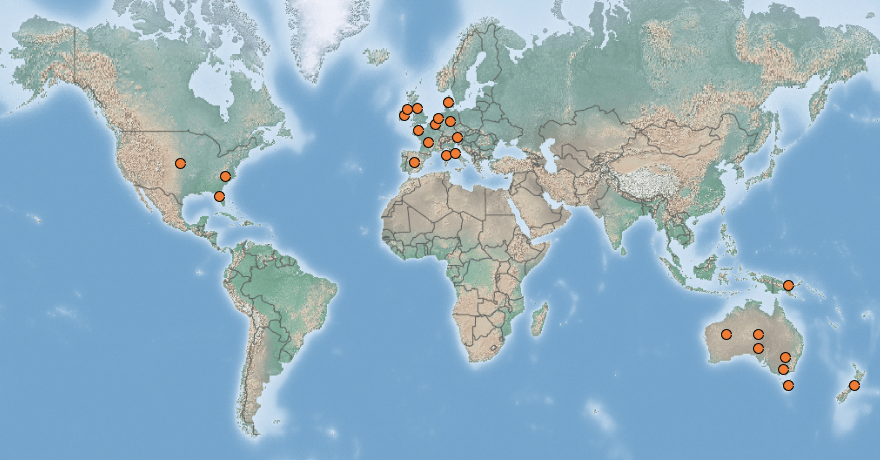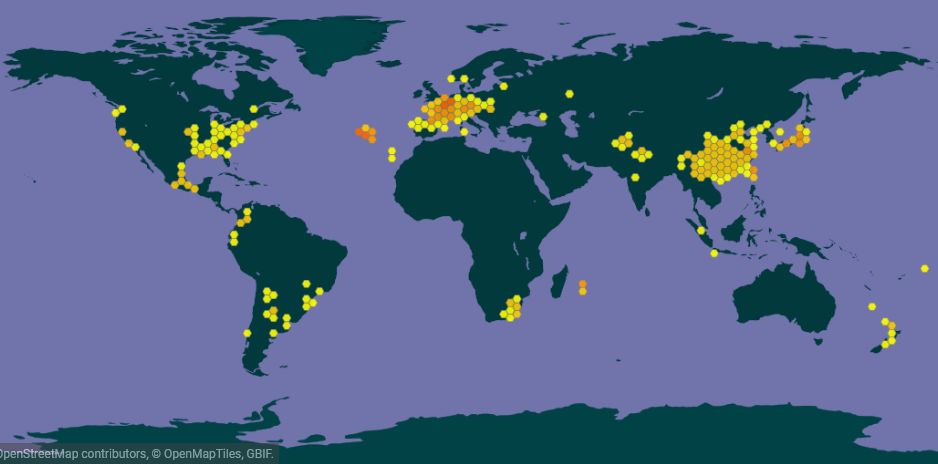 |
North American beaver, Canadian beaver | Status LU: casual. 1st record: 2000. |
 |
Kanadësche Biwer1 | Status Eur.: established. |
 |
Castor du Canada | RA: ISEIA: B1, Watch List. Harmonia+: 0,26 |
 |
Kanadischer Biber | Wikipedia: |
 |
Canadese bever | Back to the list of vertebrates |
Contents
Brief description
Like Castor fiber Linnaeus, 1758, Castor canadensis Kuhl, 1820 lives in riparian zones, rivers and lakes, usually included in a forest matrix providing food and building material. Lodges may be completely surrounded by water or built on the banks of streams and lakes. The Canadian beaver has a greater ecological flexibility – it survives better under severe climatic conditions and adapts more easily to substitute foods than its Eurasian counterpart. The Canadian beaver is likely to outcompete the native the Eurasian beaver due to higher reproductive output. It is a more active builder of dams and lodges and regulates hydrological regimes of water bodies better than C. fiber. The two species do not hybridise due to a difference in chromosome numbers. The fact that these are two different species was only confirmed by genetic studies in 1973 (Schley & Herr 2019: 138).Status and distribution in Luxembourg
Records of Castor canadensis Kuhl, 1820 in Luxembourg. Data source: Recorder-Lux, iNaturalist & GBIF, 2025-11-16.
Castor canadensis Kuhl, 1820 was first documented in 2000 in Drauffelt (Pir & Schley 2015: 443): “A beaver that appeared in Luxembourg in 2000 (Schley et al. 2001) was crushed by a train in 2002 and subsequently identified as a Canadian beaver (Schley & Herr, unpublished data).”
The species was next reported by Alexander Kristiansen on 29 November 2018 near the Sûre, upstream from Wallendorf-Pont (MNHNL 2000-).
Pir & Schley (2015: 443) report the current situation: “Genetic analyses carried out by the ANF have shown that Luxembourg is facing colonisation by the Canadian beaver from a population in Rhineland-Palatinate (Schley et al. 2009). The latter was able to develop from individuals escaping from a zoo near Pronsfeld (D) (Michaux et al. 2012).”
Actions are taken to eliminate the Canadian beaver, in order to limit its negative impacts on the fragile population of Castor fiber in Luxembourg.
The distribution map is not complete because records still have to be entered into the Recorder-Lux database (MNHNL, iNaturalist & GBIF 2019). However, a monitoring of 42 sites in winter 2021 showed a 100% occurrence of the European beaver (Dr. L. Schley, ANF, personal communication, February 27, 2023) . Currently, the Canadian beaver does not seem to be a problem in Luxembourg.
Risk assessment
ISEIA protocol
B1 (3+3+2+1) = Watch List (Ries et al. 2014: 199).
Harmonia+ protocol
Overall risk score 0,26 = (Overall Invasion score 0,52 x Overall Impact score 0,50) (evaluated by Sandra Cellina, Jan Herr and Manou Pfeiffenschneider).
 Invasion
Invasion0,50

 Impact
Impact0,26

 Risk
RiskWorldwide distribution
Bibliography
-
- CABI, 2009. Castor canadensis Kuhl, 1820 [original text by Viki Aldridge]. In: Invasive Species Compendium. Wallingford, UK: CAB International. URL: www.cabi.org/isc [accessed 2019-11-26]
- Dewas M, Herr J, Schley L, Angst C, Manet B, et al. (2011) Recovery and status of native and introduced beavers Castor fiber and Castor canadensis in France and neighboring countries. Mammal Review 42: 144–165. [DOI]
- Herr, J., L. Schley, C. Gonner, A. Arendt, G. Biver, A. Bombardella, M. Dostert, A. Frantz, B. Goebel, S. Hermes, Y. Mersch, N. Negretti, C. Origer, M. Peters, P. Reis, C. Schortgen, F. Steffes, N. Welschbillig & M. Weydert, 2018. Aktions- und Managementplan für den Umgang mit Bibern in Luxemburg. Technischer Bericht der Naturverwaltung betreffend Wildtiermanagement und Jagd, 6 (Spezialnummer): 1-40.
- Michaux, J., C. Frosch, B. Manet, J. Herr, M. Eugène, L. Dalbeck, R. Denné, M.-L. Schwoerer, S. Venske, F. Rosell, P. Hurel, N. Chevallier & L. Schley, 2012. Genetic analysis of beavers (Castor sp.) in the greater region of Belgium, Luxembourg, northern France and Western Germany. In: Book of Abstracts of the 6th International Beaver Symposium (éds Bjedov L., G. Schwab & M. Grubešić), 17-20 September 2012, Ivanić-Grad, Croatia: 110.
- MNHNL, 2000-. Castor canadensis Kuhl, 1820 in Recorder-Lux, database on the natural heritage of the Grand Duchy of Luxembourg. Musée national d’histoire naturelle, Luxembourg. URL: https://mdata.mnhn.lu [Accessed 2019-10-24]
- MNHNL, iNaturalist & GBIF, 2019. Castor canadensis Kuhl, 1820 in MNHNL-mdata, online portal combining species observation from Recorder-Lux, iNaturalist and GBIF. National Museum of Natural History, Luxembourg. URL: https://mdata.mnhn.lu [Accessed 2019-10-24]
- Pir, J.B. & L. Schley, 2015. Développement des connaissances sur la répartition et l’écologie des mammifères au Luxembourg entre 1990 et 2015. Bull. Soc. Nat. luxemb. 116: 437-455.
- Ries, C., M. Pfeiffenschneider, Engel, E., J.-C. Heidt & M. Lauff, 2014. Environmental impact assessment and black, watch and alert list classification after the ISEIA Protocol of vertebrates in Luxembourg. Bull. Soc. Nat. luxemb. 115: 195-201. [PDF 247 KB]
- Schley, L., C. Sinner, S. Venske & A. Stern, 2004. Biber in Luxemburg. Administration des eaux et forêts, Luxembourg, 20 pp.
- Schley, L. & J. Herr, 2019. Säugetiere Luxemburgs. Hrsg.: natur&ëmwelt a.s.b.l., Ministère du développement durable et des infrastructures, Administration de la nature et des forêts. 219 S. ISBN 978-2-9199511-0-9 [French edition: Les mammifères du Luxembourg, ISBN 978-2-9199511-2-3]
- Schley, L., J. Herr, L. Dalbeck, R. Denné, B. Manet, M.-L. Schwoerer, S.Venske & J. Michaux, 2009. Evidence for the presence of the North American beaver Castor canadensis in Western Europe. In: Programme, Abstracts, Participants of the 5th International Beaver Symposium, 20-23 September 2009, Dubingiai, Lithuania: 58.
- Schley, L., L. Dalbeck, R. Denné, B. Manet, M.-L. Schwoerer, S. Venske & J. Herr, 2012. Management and eradication of the North American beaver Castor canadensis in Western Europe. In: Book of Abstracts of the 6th International Beaver Symposium (éds Bjedov L., G. Schwab & M. Grubešić), 17-20 September 2012, Ivanić-Grad, Croatia: 31.
- Schley, L., L. Schmitz & C. Schanck, 2001. First record of the beaver Castor fiber in Luxembourg since at least the 19th century. Lutra 44: 41-42.
- Wörterbuchkommission (Hrsg.), 1987. Luxemburger Wörterbuch. 5 Bd. Im Auftrag der Grossherzoglichen Luxemburgischen Regierung. Linden, Luxemburg.
Page content last updated on 2024-03-11. Last proofread by Caroline Grounds on 2019-11-27.


